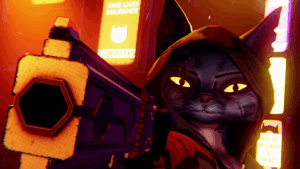Introduction: A Veteran Shooter Revisited
As someone who immerses themselves in competitive shooters—whether it’s navigating the chaos of Grey Zone Warfare, strategizing in FragPunk, or engaging in high-stakes matches in The Finals—Rainbow Six Siege has always held a special place in my gaming lineup. Even after thousands of hours across titles like Destiny, Call of Duty, Halo Infinite, and Valorant, Siege’s unique blend of tactical depth and destruction mechanics continues to stand out and feel just right. With the game celebrating its tenth anniversary and launching the major update Rainbow Six Siege X, it’s an ideal moment to reassess how this iconic shooter stacks up against its peers after a decade of updates, tweaks, and new content.
Core Gameplay and Mechanics: Still Strong After All These Years
The fundamental gameplay of Siege remains as compelling as ever. The flagship mode, Bomb, pits two teams against each other—attackers try to plant and defend a bomb, while defenders work to thwart them. This setup, reminiscent of classic tactical shooters like Counter-Strike, is elevated by Siege’s distinctive mechanics of fortification and destruction. I love setting up makeshift defenses—placing walls, razor wire, and traps—and then ambushing the attacking team. On the flip side, offensive maneuvers like breaching walls with thermite or ash add a dynamic layer of strategy that keeps each match exciting.
The game’s relatively slow-paced aim-down-sights mechanic emphasizes tactical positioning over twitch reflexes, rewarding players who think ahead. The quick kill time means players must be deliberate, deciding their approach before engaging, which makes Siege a true thinking person’s shooter.
Operators and Diversity: A Rich Roster
Siege boasts a diverse cast of 75 Operators, each with unique loadouts and playstyles, split between Attackers and Defenders. Whether you prefer smashing through walls with Sledge or darting around as Oryx, there’s an Operator suited to your preferred tactics. Although the recent Siege X update did not introduce new Operators—except for Rauora a few months prior—the existing roster offers ample variety to keep gameplay fresh and engaging. The developers do a commendable job of catering to different playstyles, enhancing the game’s strategic depth.
New Mode: Dual Front – A Mixed Feel
One of the new features in Siege X is the 6v6 Dual Front mode, which introduces a dual-objective scenario where both teams attack and defend simultaneously. However, my experience with this mode has been mixed so far. The map is enormous, and with the game’s quick kills, much of the action feels brief and fragmented. Respawns are enabled, which might help newcomers learn the ropes, but it diminishes the intense stakes that make Siege so gripping. I haven’t fully connected with Dual Front yet, and I’ll need more time to determine its place within the game’s ecosystem.
Visuals and Audio: Enhanced Sensory Experience
Siege X significantly improves the game’s sound design, which has always been one of its strengths. Explosions, gunfire, and environmental sounds are crisp and immersive, especially when experienced through quality headphones. The standout upgrade is the ability to pinpoint enemy locations based on sound cues—footsteps above or below now carry distinct audio signatures, allowing players to anticipate threats with greater precision. This heightened audio detail adds to the tactical depth and rewards attentive gameplay.
Environmental Interactions and Destructibility
Destructible environments have long been a hallmark of Siege, and the new updates continue this tradition. Rappelling offers some of the most fun offensive options—swinging into enemy lines like a tactical Spider-Man and catching opponents off guard. Recent enhancements, such as the ability to sprint along walls or jump around corners, have made this maneuver more viable in combat. Additionally, destructible objects like gas pipes and fire extinguishers can be shot to create flames or smoke, adding cinematic flair and subtle area control. While these features are mostly cosmetic, they contribute to a more dynamic battlefield.
Sound Design and Tactical Advantages
Sound has always been a crucial element in Siege, and the latest version takes it to new heights. Improved audio fidelity and spatial cues enable players to locate enemies more accurately, making sound awareness a key skill. Recognizing the difference between footsteps overhead versus below adds a layer of strategic depth, allowing players to plan movements and ambushes with confidence.
Gameplay Innovations and Future Potential
Offensively, rappel mechanics continue to be a highlight—hanging upside down and catching enemies off-guard remains satisfying. The addition of new destructible elements like gas pipes and fire extinguishers introduces small but impactful tactical options, even if they are rarely decisive in fights. However, some limitations persist, such as the inability to breach certain thick walls or barriers, which feels outdated compared to more modern shooters that allow more flexible destruction.
Overall, my early impressions of Siege X are positive. The game retains its core appeal while introducing meaningful enhancements. Although I’m still exploring the new mode and unlocking all features, it’s clear that Rainbow Six Siege X offers a promising step forward. I look forward to diving deeper and sharing a comprehensive review soon.











